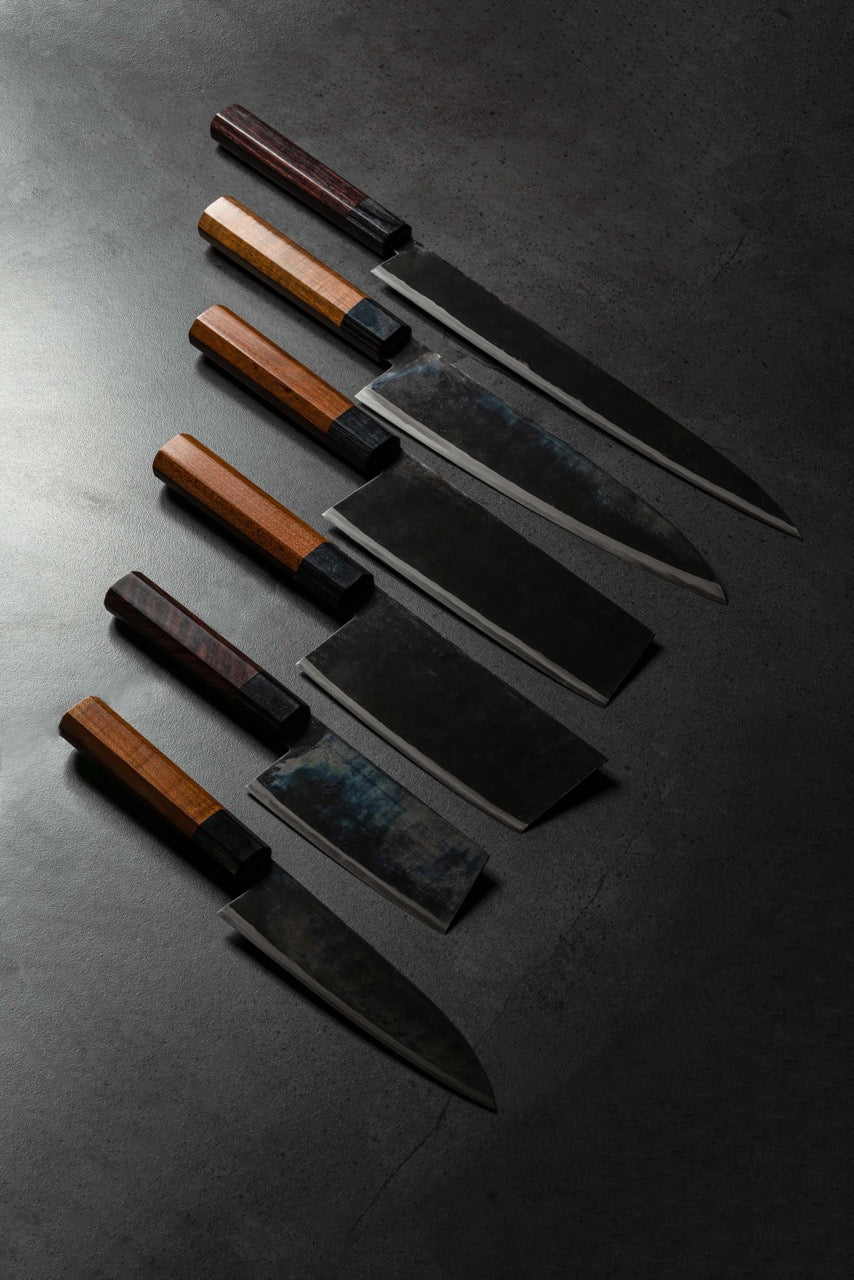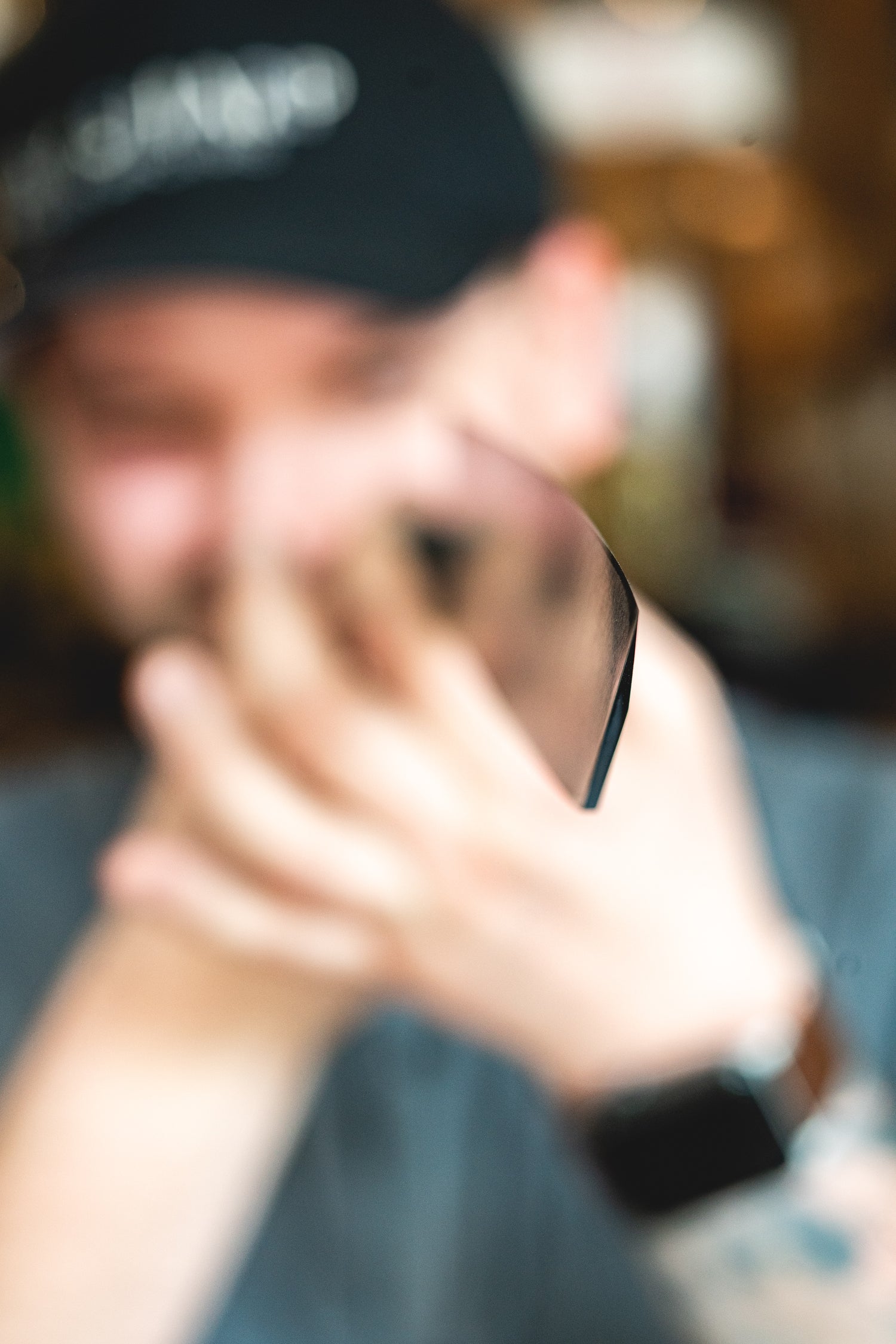
Hitohira Tanaka Mosuke Shirogami #2 Yanagiba 300mm Ho
Please note
Each handle is unique and may feature distinct variations, such as different shades or colors in the buffalo horn, which is part of its authentic, handcrafted character.
Store availability
*Transfer available between stores, contact us at info@staysharpmtl.com or 514-503-1185 (MTL) / 418- 440-7770 (QC)
Description
Considéré comme l’un des meilleurs forgerons de la région, Yoshikazu Tanaka est forgeron depuis plus d’un demi-siècle. Il travaille maintenant avec son fils et un apprenti. C’est un traditionaliste, mais il cherche toujours à améliorer son processus et ses compétences. Il utilise la méthode traditionnelle de trempe avec du charbon de pin et il utilise la cendre de paille par la suite. C’est une façon très ancienne de fabriquer des couteaux. Il n’utilise pas de thermomètre pour la trempe, il calcul manuellement la température de l’acier en examinant sa couleur. Tanaka-san cherche toujours à s’améliorer. Il utilise un four à température contrôlée pour la trempe, que seuls quelques forgerons de la région utilisent. Lui et son équipe ne forgent que 30 couteaux par jour entre eux trois. Pour référence, certains forgerons forgent jusqu’à 100 lames en une seule journée. La raison pour laquelle il n’en forge que trente est qu’il prend son temps, forgeant soigneusement à très basse température. À basse température, l’acier ne s’étire pas aussi vite, mais il conservera beaucoup mieux la granulométrie de l’acier. Étirer la granulométrie rendra l’acier cassant, ce qu’il s’efforce d’éviter. Il déplace fréquemment l’acier à l’intérieur et à l’extérieur du four pour vérifier la couleur, puis lorsque toute la lame est d’une nuance spécifique de couleur, il trempe l’acier dans l’eau. La tempe à l’eau (Mizu) est la plus difficle à réaliser et demande une manutention très soignée.
Tips for best results
Make sure your knife will deliver its absolute best by having it professionally sharpened at least once a year. Please note that our meticulously handcrafted Japanese knives are – unless otherwise noted – carbon steel and not stainless steel. To prevent rust, make sure the blades are patted dry – especially when cutting acidic items. Never cut frozen foods, hard products, bone, or twist the blade when using. Never soak in water after use or put in the dishwasher. After use, store in a cool, dry place and avoid high temperature fluctuations.
Our commitment to you – our customers
Warranty
Every knife we carry has a lifetime warranty from manufacturing defects and errors. For example, if the handle becomes detached or cracks appear after a few weeks of proper use. Or if there are any blade cracks from the edge to the spine. While such defects are indeed rare, they can occur. In such cases, we will exchange the knife in question or give you a refund. Each warranty case is different depending on the criteria, and we reserve the right in each and every case to evaluate the applicability of our lifetime warranty in the event of any manufacturing defects and errors.
After-Sales service
Do you get the feeling that your knife just can’t “cut it”?
Each knife we carry is supplied with a so-called “factory edge”. Our chef knife range comprises more than 200 different products. While all our handcrafted Japanese knives ship with a “factory edge”, ultimate blade sharpness can vary. If you feel that your knife’s blade edge is not performing to its full potential, feel free to contact us and we will provide you with professional sharpening for free!
Oops! What about the truly Unthinkable?
Was it just through a slight slip of the hand that your knife accidentally fell on the floor and damaged its tip and blade, or it was used to cut a hard, frozen product and chipped? Don’t despair, get in touch with us and we will solve the problem through our in-house, professional sharpening and repair service.
Simply contact us or visit our store to get a free estimate.








